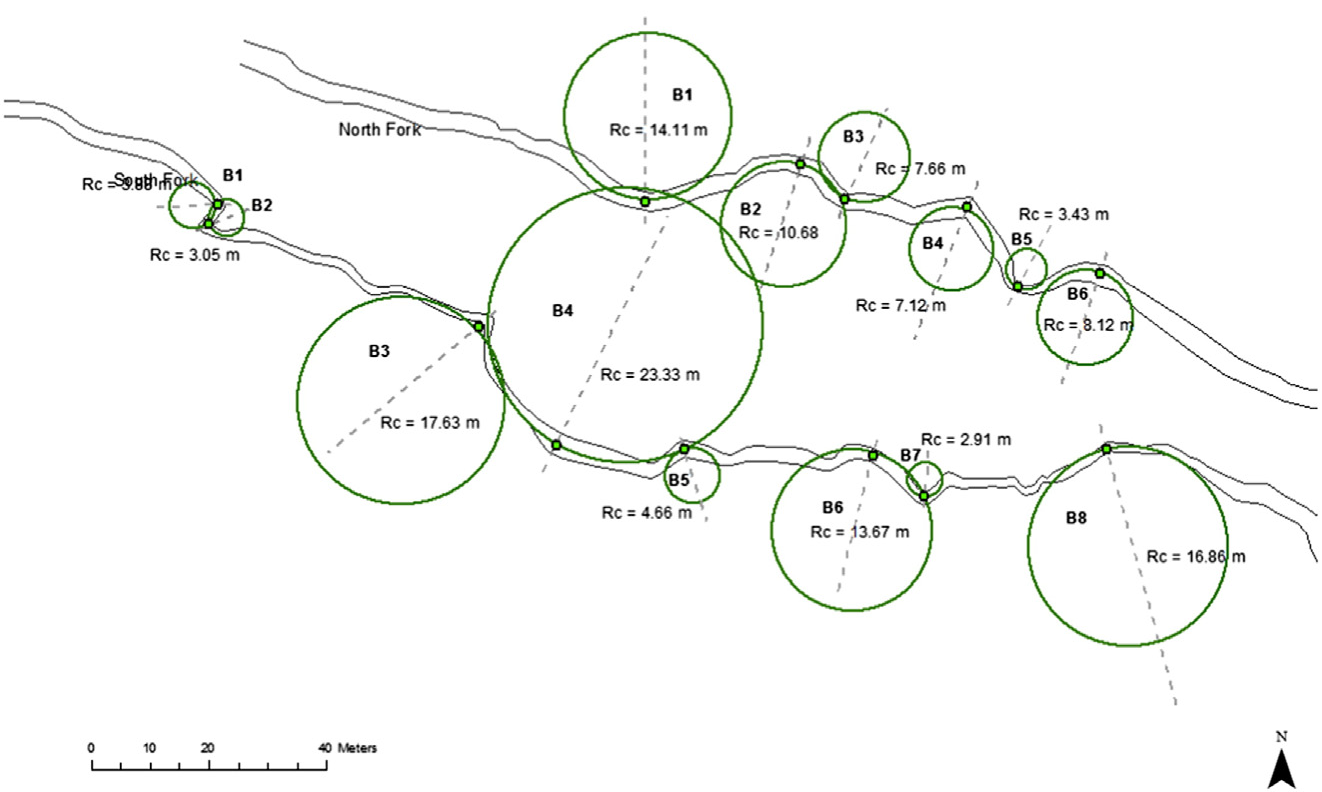Morphology of small, discontinuous montane meadow streams in the Sierra Nevada

Abstract:
Various fluvial geomorphic models have been developed to characterize the relationships between planform and bedform features of large alluvial channels; however, little information exists for meadow channel morphology. Field investigation of seven narrow, low-energy meadow stream reaches in the northern Sierra Nevada range of California revealed similarities and differences to larger alluvial channels. The average radius of curvature to channel width ratio (5.54) of the meadow streams was almost double that of larger alluvial streams (3.1), with a standard deviation of 4.66. Average meander wavelength to channel width ratio (22.43) was almost triple that of typical alluvial streams (8.5), with a standard deviation of 16.80. Bedform features occurred at an average of 6.72 channel widths, similar to typical pool–riffle spacing of 5-7 channelwidths. Grass sod connected a series of scour pools, providing the same energy drop function as riffles or steps. Results suggest that bedform regularity is similar to typical pool–riffle systems, especially as we move to larger watersheds and higher precipitation and runoff, but planform features are less developed and highly influenced by vegetation. Restoration efforts can benefit from considering how planform and bedform channel patterns develop in these meadows.
Slocombe ML, Davis JD (2014). Morphology of small, discontinuous montane meadow streams in the Sierra Nevada. Geomorphology 219 (2014) 103–113.